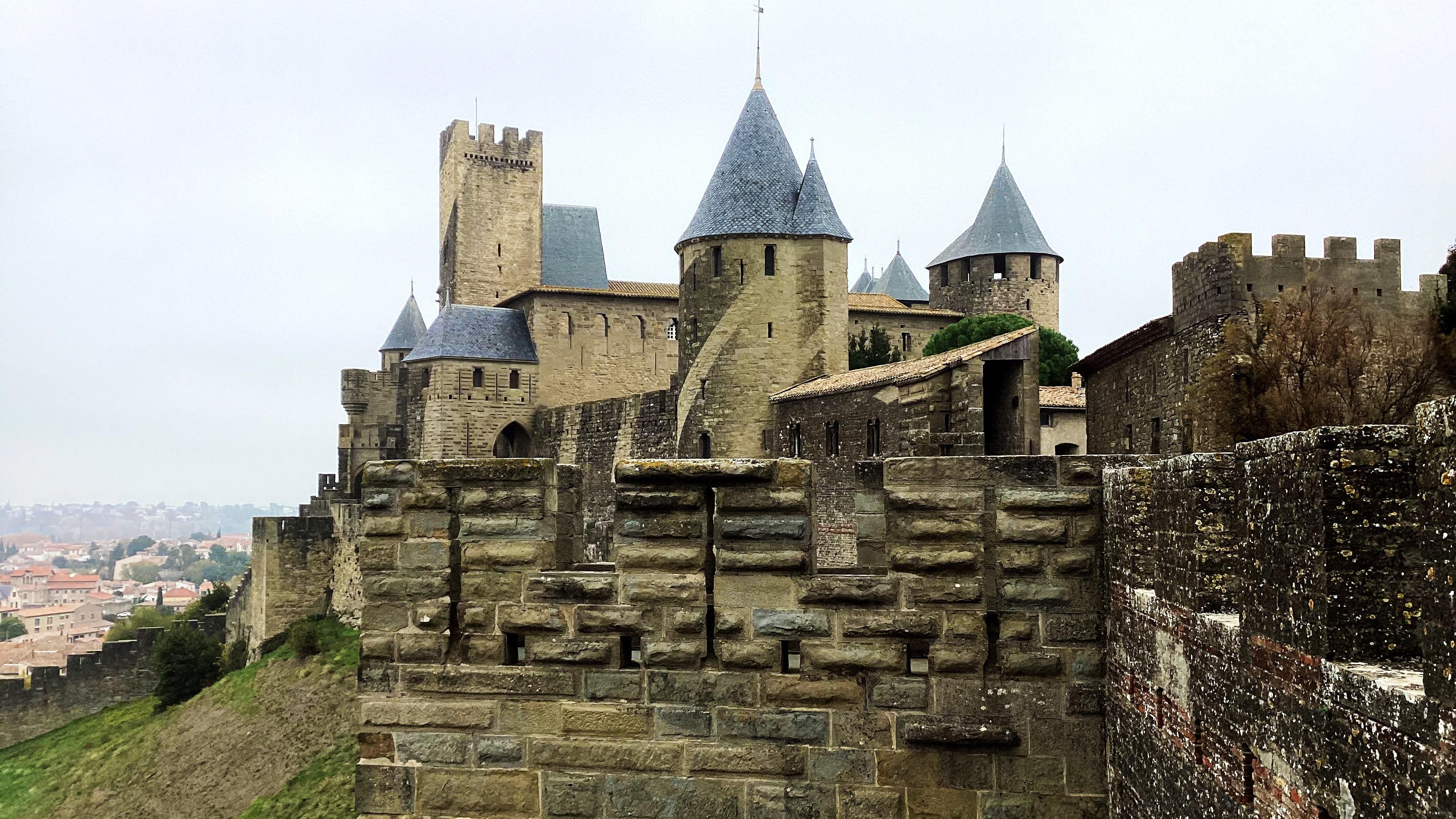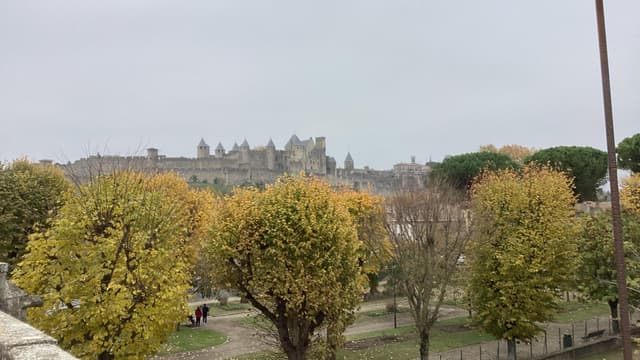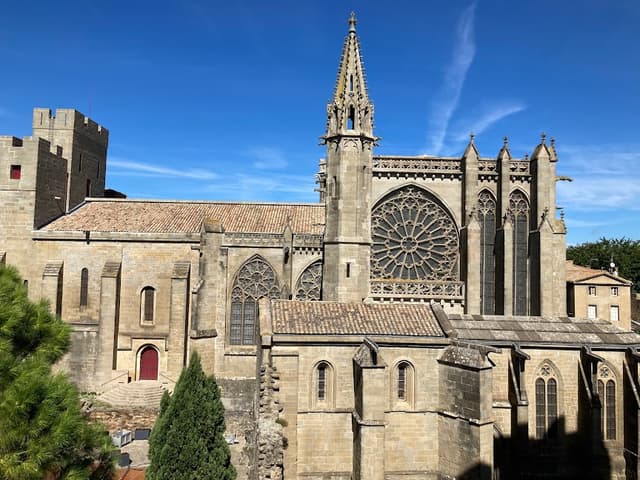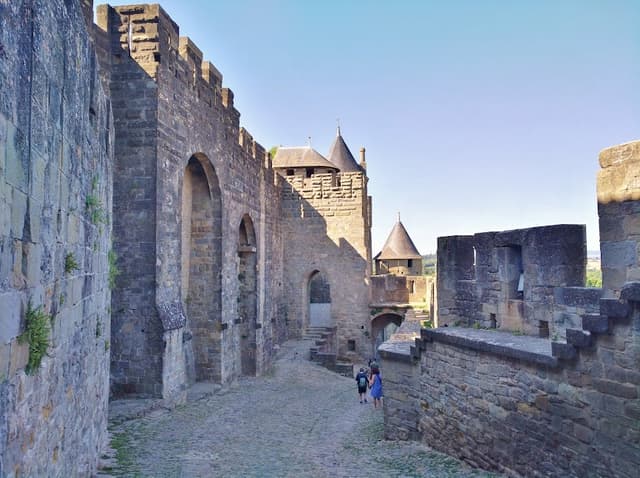A day in Carcassonne

Getting there
I took the train from Toulouse Matabiau Gare. The journey takes about one hour, and it’s delightful, with a lovely landscape full of green fields and vineyards. The SNCF trains are also very comfortable.
My train tickets cost 16 euros and 8 euros, respectively. The cost of tickets varies depending on the time of day, typically declining as the day goes on. There’s a 50% discount for people under 30, you have to select that option on the vending machine (or ask for it if you're purchasing your tickets at a traditional ticket office).
Please remember to validate your ticket on the orange machines before boarding the train! It’s such an easy thing, and you’ll have to pay a fine if you didn’t do it beforehand. Tickets are checked frequently, so keep them with you for the duration of the trip.
Once you arrive, the citadel is a 15-minute walk from the train station, with enough indications along the way.

Behind the city’s name
By now, you may be wondering where Carcassonne got its name. According to legend, the name of the city comes from the 9th century. The city was under siege by Charlemagne, and there was almost no food left. Dame Carcas, the wife of the city's ruler, took the remaining food (a small pig) and threw it over the walls. She aimed to persuade the soldiers of Charlemagne that since the city had plenty of food and could afford to waste it, there was no point in going on with the siege.
And it worked! Dame Carcas ordered that the trumpets sound as the soldiers left, inviting Charlemagne to return and negotiate a peace treaty. Hence "Carcas sonne" (lit. "Carcas sounds").
In many ways, the legend is historically incorrect. Carcassonne has been inhabited for thousands of years, and the site's first known name is Carcasso (as cited by Pliny the Elder in the first century AD). The current name derives from the Latin name.
Furthermore, the conquest of Languedoc did not take place during Charlemagne's reign. Instead, it happened during the reign of Charlemagne's father, Pepin the Short.
(Part of the reason why I wrote this last paragraph is that it gave me an excuse to write “Pepin the Short,” which is on my top 10 list of “Best King Names Ever.”)
Historical background: from the Cathar movement to the city’s restoration
In the 12th century, the people grew more and more tired of the ever-present demands of the clergy. Many felt attracted to the ideals of the Cathars. The Cathar doctrine (“Cathar” comes from the Greek word “katharós”, meaning “pure”) opposed the Catholic Church in many ways.
As a result, Pope Innocent III (what an ironic name!) started the Albigensian crusade in 1208. It was the first crusade against people who identified as Christians.
Thousands of people in the Languedoc region were killed because they were considered heretics or opposed the church in some way. As a Cathar center, Carcassonne suffered particularly during this conflict. After a period of siege, the Inquisition succeeded in installing a tribunal inside the city, causing the deaths of many more.
Carcassonne survived this and other tragedies. However, the city was abandoned centuries later. In the 19th century, there was a greater interest in preserving and restoring historical monuments. The citadel was in ruins, and the restoration work took about 50 years. Architect Eugéne Viollet-le-Duc oversaw the project.
Some of his work was polemic because he was more concerned with the original shape and structure than with using the original materials. (In many cases, that wouldn’t exactly be possible anyway.)
Another polemic event regarding the cité was the 2018 art installation by Felice Varini. It was made of bright yellow aluminum pieces arranged in concentric circles. Although it didn’t damage the buildings, you can still see the marks where the pieces stood in some photos. Many of Carcassone’s citizens were against the installation.
Regardless of these matters, walking around in Carcassonne and exploring its streets truly feels like walking back in time. It’s easy to disregard the souvenir shops if you’re not interested in that kind of stuff and imagine how life was back then.



Best time to visit
There is no best or worst time to visit Carcassonne; each has advantages and disadvantages. You can have a great time in Carcassonne at any time of the year, but there are some important factors to keep in mind:
In the off-season, it is much more difficult to find places to eat. There are some small convenience stores on the way from the station to the cité, but not many, since many small businesses are closed during this time. If you usually pack your lunch before going on day trips, that shouldn’t affect you much, though (it worked for me; I bought food in Toulouse before entering the train).
In the high season, Carcassonne can get very crowded (it is the second most visited site in France, right after Mont Saint Michel), which may affect the amount of time you spend visiting and waiting in line to buy castle tickets. In the low season, there wasn’t even a line. In many areas, I had the walls of the castle to myself.
Coming in the spring and summer months has advantages if you prefer to see more activities taking place inside the cité and if you dislike the cold. (But again, I’m a Lisbon girl who thinks that anything around 2ºC is equivalent to Arctic temperatures.)
The home for unique & authentic travel
